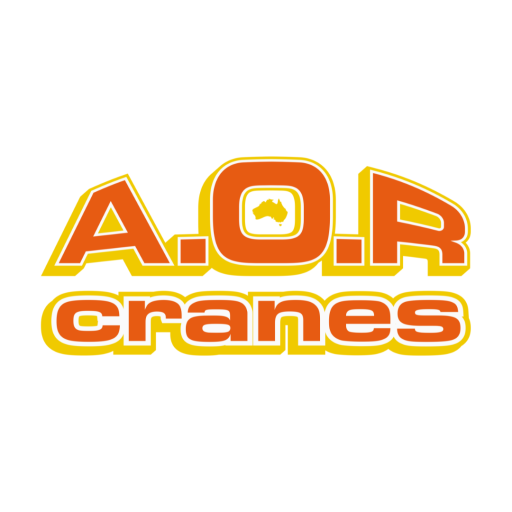
How Wind Speed Impacts Crane Lifting Capacity & Safety
In Sydney’s dynamic construction environment, crane safety isn’t just about the machine – it’s about the conditions it operates in. One of the most underestimated risks during a lift is wind speed. Whether you’re working in the coastal winds of the Northern Beaches or the gusty zones around Western Sydney, understanding how wind affects crane lifting capacity is critical for every site manager and project planner.
Why Wind Speed Matters in Crane Lifting
Wind imposes lateral forces on both the crane and the load. As wind speed increases, these forces can compromise the stability of the crane and the precision of the lift. Even a seemingly manageable breeze can shift a suspended load, causing swing, drift, or worse – a catastrophic collapse.
Crane Types and Wind Sensitivity
At AOR Cranes, we provide a range of mobile crane hire options, each with its own wind sensitivity profile:
- Franna Cranes: Ideal for short hauls but vulnerable to crosswinds due to their compact, mobile design.
- Mobile Slewing Cranes: Provide rotational lift ability but are sensitive to boom sway in moderate winds.
- All-Terrain Cranes: Versatile and robust, yet their extended booms require careful wind load analysis.
- Crawler Cranes: Offer strong ground contact but are not immune to tipping risks during high lateral wind exposure.
Manufacturer Wind Speed Guidelines
Crane manufacturers set strict limits for safe operation in wind. Generally, operations must cease when wind speeds exceed 9 to 14 m/s (32 to 50 km/h) depending on the crane type and boom length. Many of AOR Cranes’ fleet models are equipped with anemometers and real-time load monitoring systems to help maintain safety thresholds on-site.
Wind Speed Limits by Crane Type
| Crane Type | Max Wind Speed for Safe Operation |
| Franna Crane | 9 m/s (32 km/h) |
| Mobile Slewing Crane | 11 m/s (40 km/h) |
| All-Terrain Crane | 12 m/s (43 km/h) |
| Crawler Crane | 14 m/s (50 km/h) |
Source: Australian Standard AS 2550.5-2016, Manitowoc Cranes Wind Conditions Guidelines
How Wind Affects Load Charts
Load charts are calculated under ideal conditions. When wind is factored in, crane capacity must be derated to account for additional stress. In some scenarios, a 50-tons lift may be reduced to 35 tons or less due to wind influence alone. This derating is essential for preventing overload and structural stress.
Lifting Capacity Derating Example
| Wind Speed | Max Capacity at 20m Radius |
| 0 m/s | 50 tons |
| 8 m/s | 45 tons |
| 12 m/s | 35 tons |
Source: Safe Work Australia – Guide to Mobile Cranes
Local Impact: Lifting in Sydney’s Varied Wind Zones
- Northern Beaches: Proximity to the ocean makes wind gusts frequent and unpredictable.
- Parramatta & Western Suburbs: Urban tunnels and open sites experience swirling wind currents.
- Bondi to Botany: Coastal zones require vigilant real-time wind monitoring.
AOR Cranes has executed safe lifts in all these conditions, guided by pre-lift assessments and experienced operators. You can explore our capabilities by reviewing projects featured in our crane hire work gallery.
Best Practices for Wind-Responsive Lifting
- Check wind forecasts and monitor onsite anemometers before every lift.
- Secure the load with tag lines to control swing.
- Use counterweights and outriggers properly.
- Never exceed wind limits in load charts, even for minor lifts.
- Postpone lifts during gusty or unpredictable conditions.
Wind Safety Checklist (Used by AOR Cranes)
- Real-time wind monitoring tools installed on all mobile crane units
- Strict adherence to manufacturer wind speed limits per crane type
- Use of tag lines and outriggers to stabilize suspended loads
- Lift operations are postponed if wind speeds approach safe limits
- All operators are trained and certified in wind-response procedures
When to Postpone or Reassess a Lift
Crane operations should stop if:
- Wind exceeds manufacturer thresholds.
- Loads begin to sway uncontrollably.
- Ground conditions become unstable due to rain or wind erosion.
Regular reassessment is a hallmark of professional lift planning and something AOR Cranes prioritizes on every job.
How AOR Cranes Ensures Safe Lifting
Our mobile crane hire services in Sydney include:
- On-site wind risk assessment.
- Lift planning support tailored to your site.
- Skilled operators trained in adverse weather response.
- Equipment with real-time wind and load monitoring features.
By choosing AOR Cranes, you’re not just hiring a machine. You’re getting a partner committed to lifting safety in every sense of the word.
For further guidance on safe operations, you may also want to read Understanding Load Charts: How to Read and Apply Them
Conclusion
Wind speed may be invisible, but its impact on crane lifting is substantial. From load chart derating to site-specific assessments, managing wind is non-negotiable for safe crane operation. For Sydney site managers and builders, working with a crane hire company like AOR Cranes ensures you’re covered – even when the weather turns.

AOR Cranes is dedicated to delivering top-notch crane hire services with safety, reliability, and expertise at the core. With over 30 years of experience, we handle every project with care and expertise to meet your needs.








